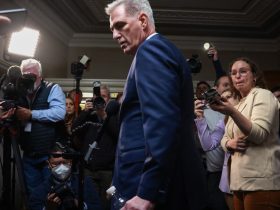September was a tough month for markets. With interest rates rising significantly, markets pulled back across the board. In fact, September marks the second month in a row that U.S. indices were down by mid-single digits, with the Nasdaq being the worst performer. On the international side, developed markets were down slightly less than U.S. markets, with emerging markets showing similar results. Even fixed income declined. What does this all mean for the rest of the year? Let’s take a closer look.
Economy Remains in a Good Place
Despite the market woes, the economy continued to chug along last month. Job growth remained healthy, consumer income and spending continued to grow, and retail sales were up. And while consumer confidence reportedly dropped, digging into the data reveals people still feel pretty good about the present—even if they’re worried about the future. This has been the case for a while now, even as growth continued. So, it’s not something to get too concerned about just yet.
On the business side, the news was also positive. Both service and manufacturing confidence ticked up, and business investment came in strong. Overall, we’re still in a pretty good place when it comes to the economy.
Last but not least, the inflation data also got better. While headline inflation was up, on an increase in oil and gas prices, core inflation continued to drop to a multi-month low. With the housing market continuing to weaken, that trend is likely to last the rest of the year. That mixture of persistent economic growth and improving inflation is a good combination.
The Interest Rate Problem Remains
Although the economic news is good, markets pulled back on political worries. A government shutdown loomed and, even more importantly, interest rates continued to rise. While the politics are settled for the moment, with a temporary deal in place, the interest rate problem remains. We are likely close to the end of the Fed’s hiking cycle. Still, markets are coming to the realization that the Fed is not likely to cut any time soon and that rates are likely to stay higher for longer.
That realization drove a sharp increase last month, with the yield on the 10-year Treasury up from about 4.1 percent to 4.6 percent. Higher rates typically mean lower values, and that is just what we saw. And on top of everything else, September is typically the worst month of the year—and it certainly lived up to that reputation. With everything against us, it’s kind of surprising the results were not worse. But that suggests the rest of the year may well be better.
Year-End Expectations
With the economy continuing to grow, the fundamentals are solid. While rates are up, if the Fed stops as expected, they are likely close to their peaks—and could even come down. And while September is usually a weak month, the last quarter is generally stronger. With a solid foundation and with headwinds abating (or even turning to tailwinds), the rest of the year may well be better.
None of this is guaranteed, of course. Risks remain, both here in the U.S. (with inflation and the Congress) and abroad (with China, Russia, and other problems). But with these many worries seemingly priced in over the past couple of bad months, there is substantial room for a recovery, especially given the solid fundamentals. Despite everything, we are still in a pretty good place. And that’s not a bad way to start the fall.
Read the full article here












Leave a Reply